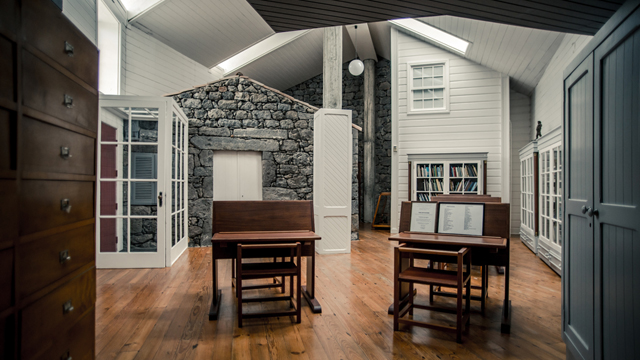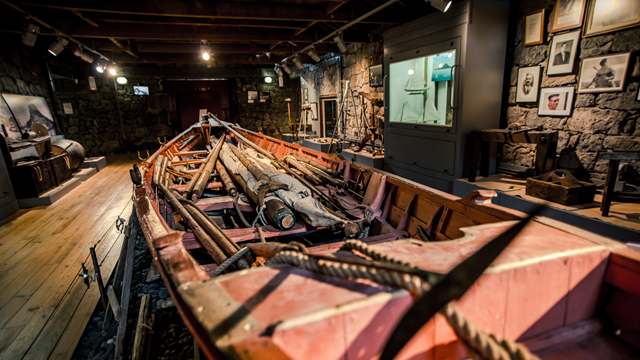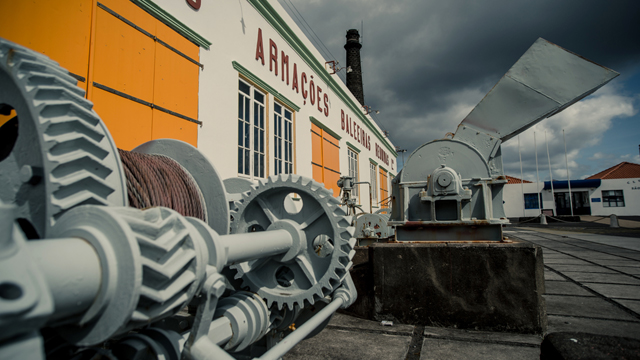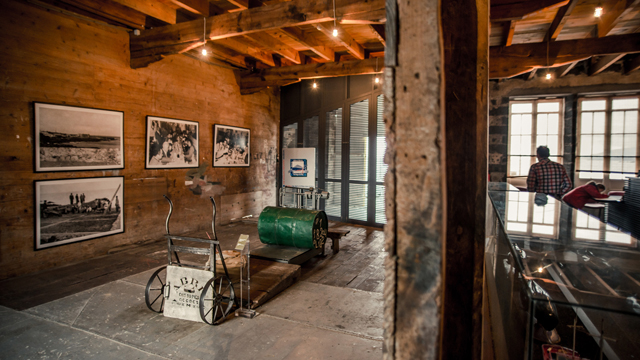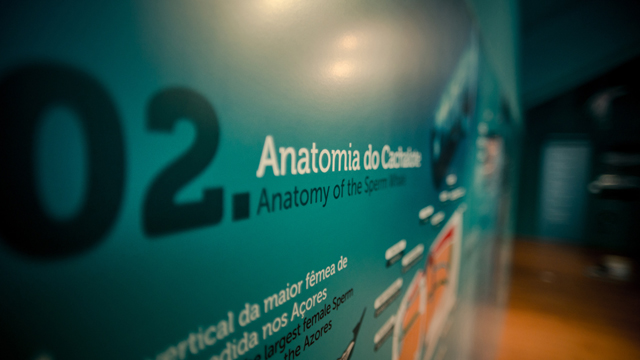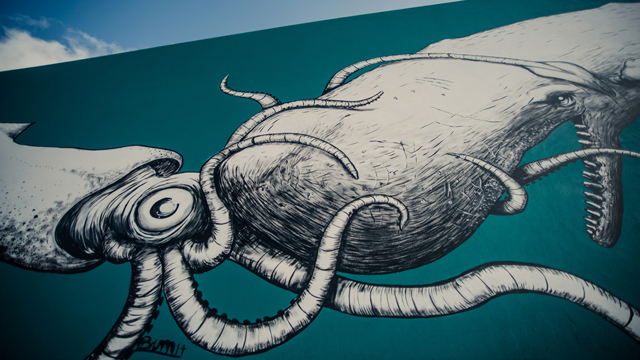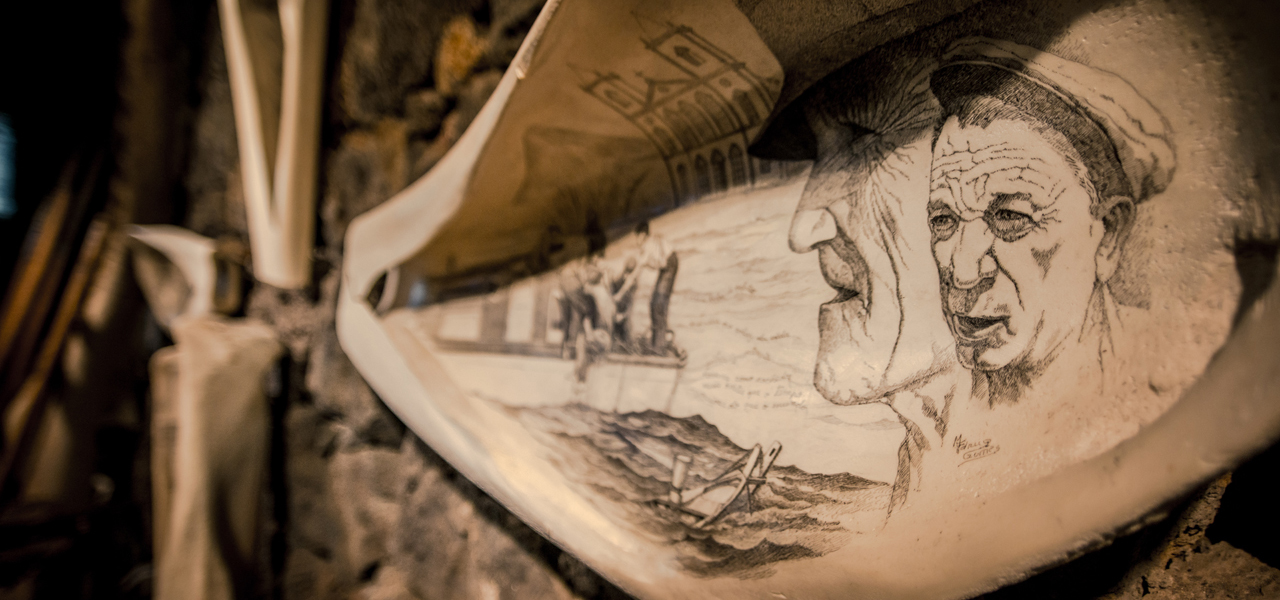
This event was followed by the establishment of another company, in the parish of São João, belonging to the Lemos family from the parish of São Mateus and the Maciel family from the parish of São João (the company had two whaling boats and melting cauldrons), whose facilities on land were destroyed by the cyclone on August 28th 1893. After this tragedy the company closed and sold their boats to the whaling companies in Lajes village, which had been established in the meanwhile.
In 1897 there was 6 whaling companies in Lajes village, that worked in a more or less organized way and were led by local managers.
In the beginning of the 20th century, legislation was published for the regulation of the whaling activity, thus leading to the legalization of the existing companies.
The parish of Ribeiras was one of the most important whaling centres in the Azores, having three whaling companies at the time: Companhia Baleeira Americana, Companhia Nova Ribeirense and Companhia União Ribeirense.
The whaling industry lasted about 150 years and was definitly over in 1987 because of the international environmental laws.
Today, the whale hunts are kept alive with the Regata de Botes Baleeiros | Whale Boat Races.
In those days, the whalers were also farmers. They would work the land all year round and dedicate their lives to the whale hunts only on the months when sperm whales came passing through the Azores.
When a sperm whale was seen passing by, the “Vigia” (person responsible for the look-out of sperm whales, in small wood buildings, located in very high places), would blow through a sea shell or launch a small rocket.
The whalers would leave everything and run to the harbour, picking up baskets with food on the way, and go out to sea in the small whaling canoes, unknowing when and if they would come back.
After overcoming the bigger waves by the coastline, the whaling boats, each with 7 men, would then start to glide.
Sometimes the sperm whales would change their direction, when that happened the “Vigia” would remove the flag; the boats would start moving in circles until the “Vigia” would hoist the flag again, indicating the right direction to follow.
The technique consisted of approaching the sperm whale, silently. The most difficult and dangerous task was that of the “trancador” or “arpoador” (harpooner) whom stands by the prow, harpoon in hand, waiting for the order to attack the sperm whale in a crucial place.
.
After being harpooned, the animal would then blood to death. Sometimes the sperm whale would react violently and drag the boats down with it, since the boat was still attached to the animal by the line, which was wrapped in 2 wooden tubs.
After being captured, the sperm whale was towed to one of the whaling factories, where it would be cut up for the production of oil and flour; the head was separated from the body and the precious liquid – spermaceti – was emptied into buckets, tubs, cans. This was a very nauseating task, made worse by the heat and humidity.
At first, the process of cutting up and melting down the whale was all handmade and very hard work for the whalers, by using direct heat in traditional caldrons, the “traiols” – it could be compared to slave labor.
From 1930 on, come the big factories and industrialization.
In 1942 the company “Fabrica das Armações Baleeiras Reunidas” was established, in São Roque village, by the merger of 3 companies: Companhia Velha Baleeira, Lda, Armação Baleeira do Livramento, Lda and Armação Baleeira Atlântica, Lda.
In 1955, the society “Sociedade de Indústria Baleeira Insular, Lda. – SIBIL”, in the village of Lajes do Pico begins to labor and is established by the merger of 10 whaling companies: 3 based in the parish of Santa Cruz das Ribeiras and 7 from Lajes village.
Nowadays, the whaling tradition goes on with: the Whaling Boat Races - Regatas de Botes Baleeiros, Whalewatching and the monuments and museums.
Curiosities | Stories | Legends:
During the royal visit, to the City of Horta, on June 28th 1901, King Charles and Queen Amélia were welcomed by a squadron of whaling rowboats, which sailed around the kings ship and accompanied them to land. On the following day there took place whaling boat races, with sail and oars, and other boats. History has it that 2 of the whaling boats were from Lajes do Pico village, belonging to the companies “Senhoras” (Ladies) and “Judeus” (Jews). King Charles, very pleased with the whalers tribute, came to offer a whaling boat to each of the companies whose boats won the races.
Once upon a time a whale was seen. The men set sail and the harpooner hit the target, but the wounded whale decided to dive back into the sea. The harpooner, on seeing that the whale was escaping, tied the line onto his own body e was dragged by the sea. The rest of the crew were terrified but recovered and sought out their friend, but he was not found. They returned to land and told the sad news to the family of the brave whaler, who cried all night long. The next day, the men returned to sea to look for the body. Unexpectedly, they saw a shadow in the distance: it was the whaler standing on the whale he had killed, leaning on his harpoon, smoking a cigarette: “Now you arrive?”
